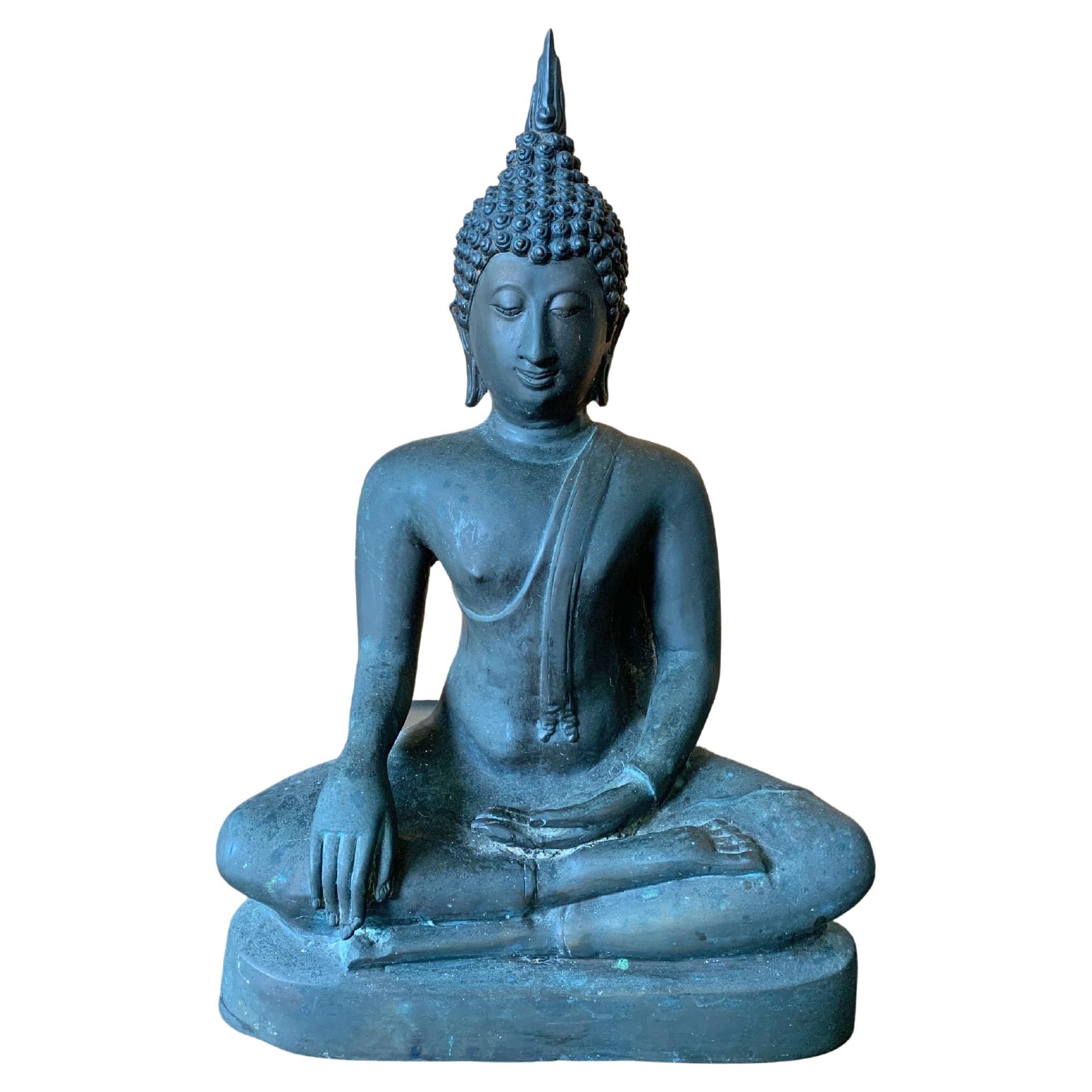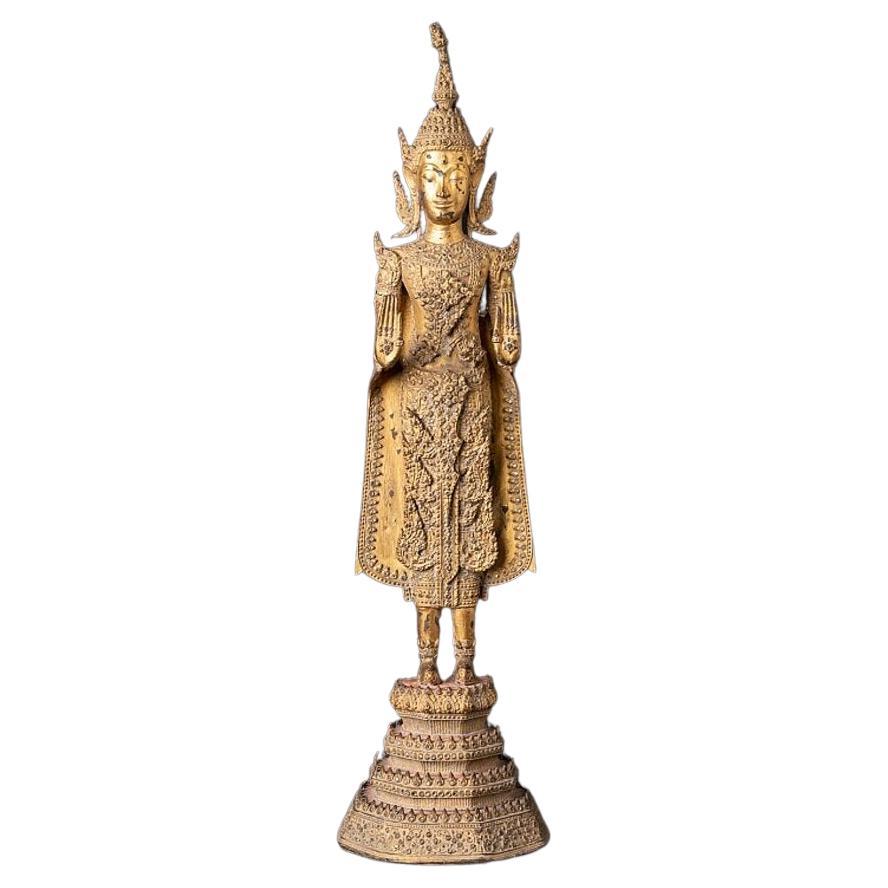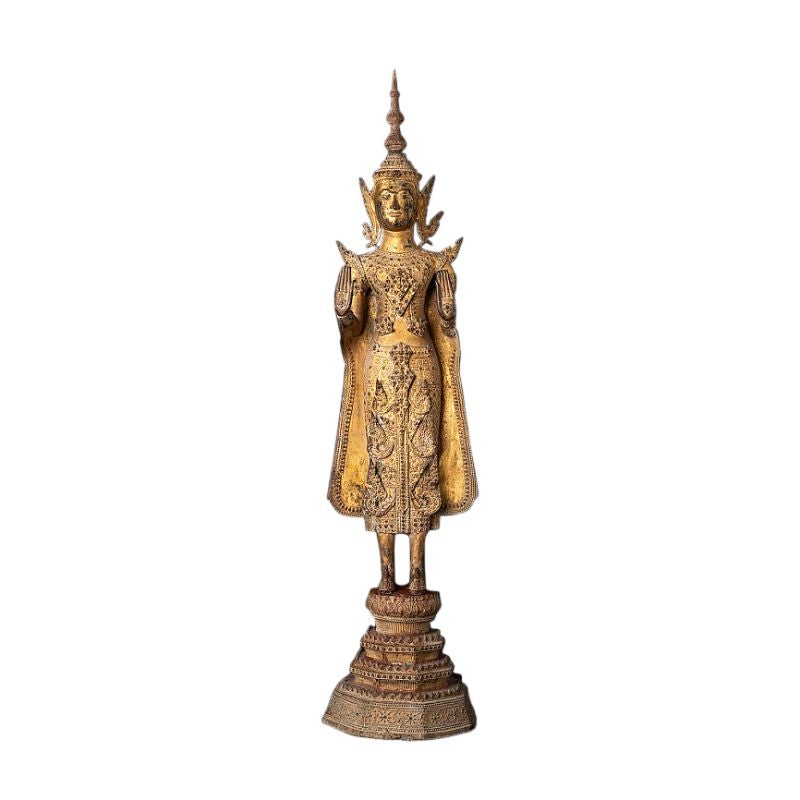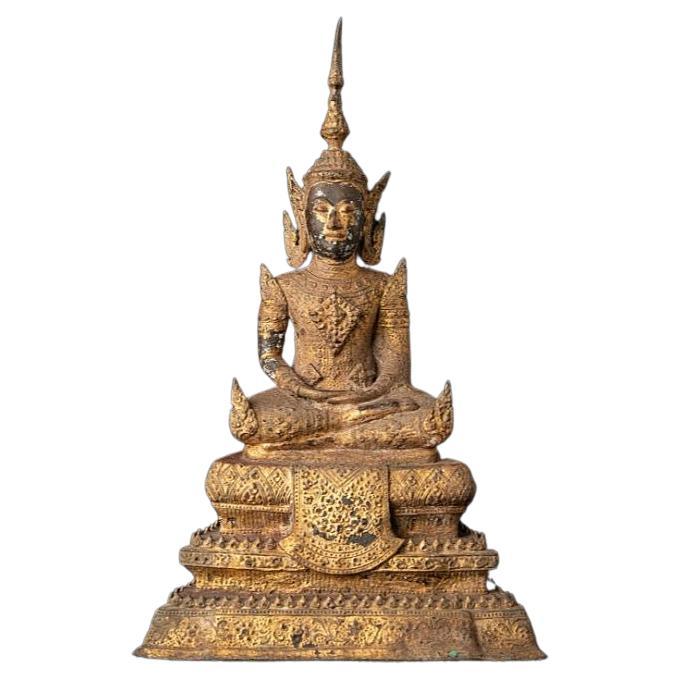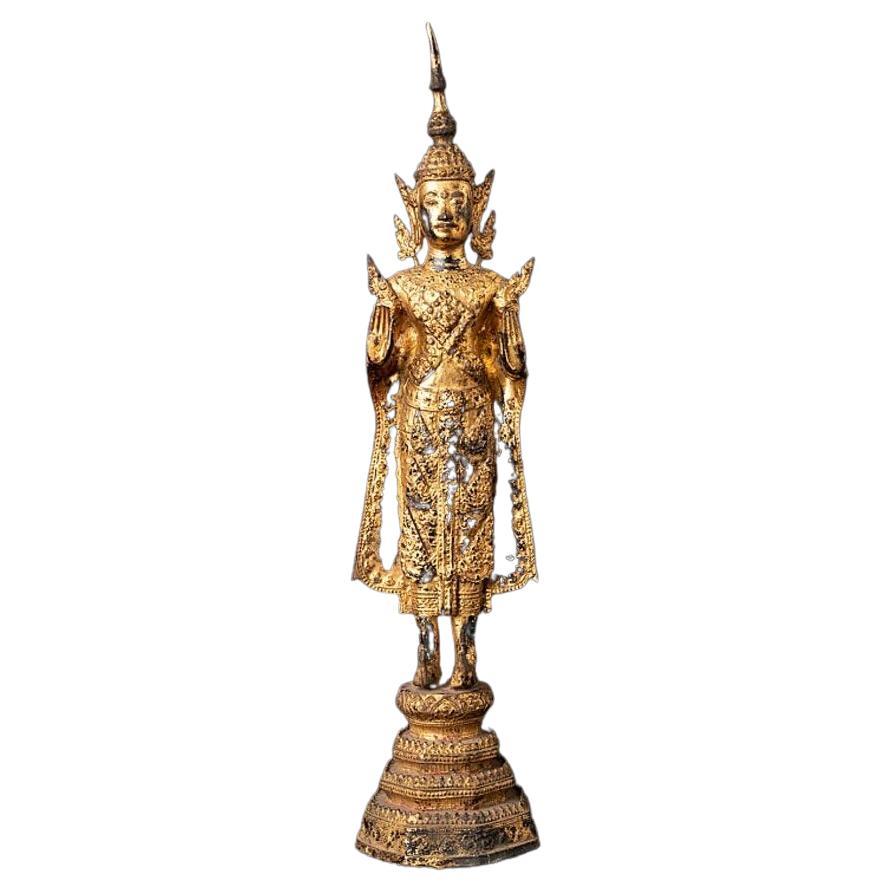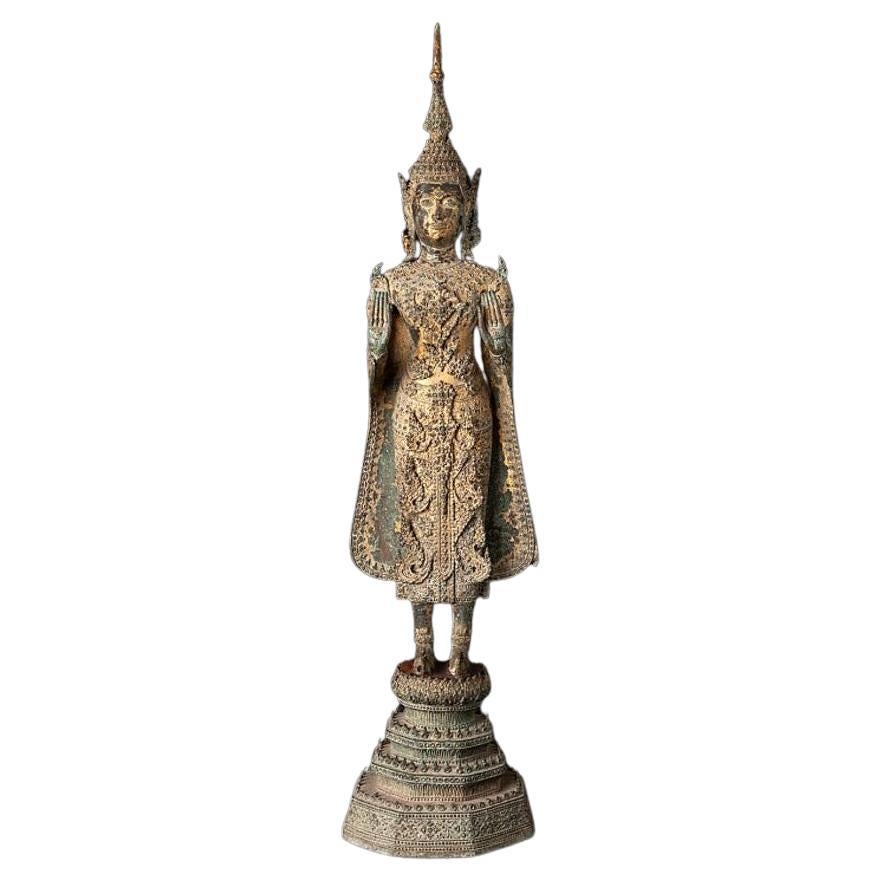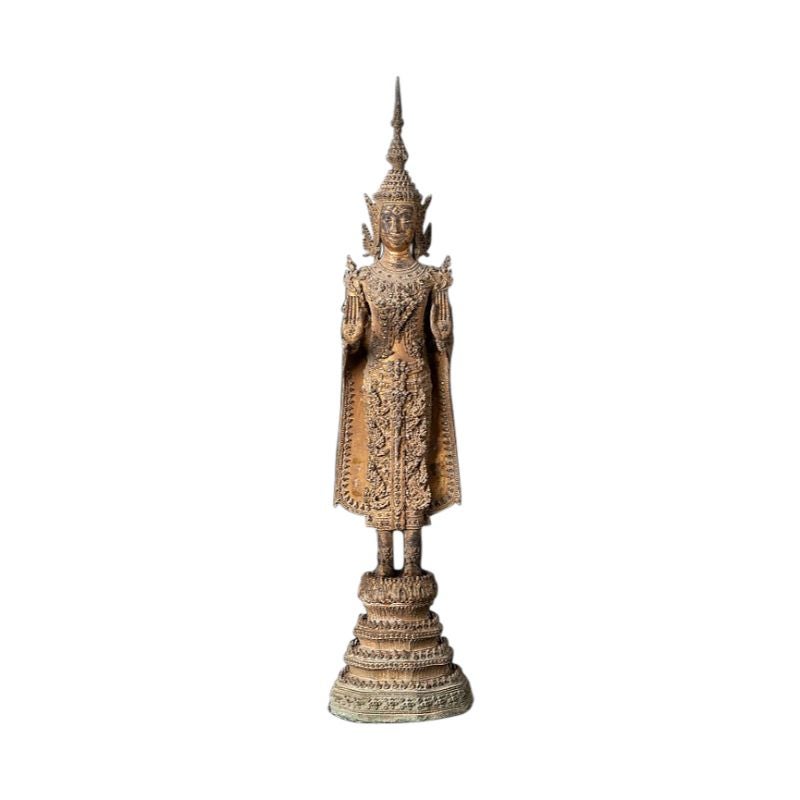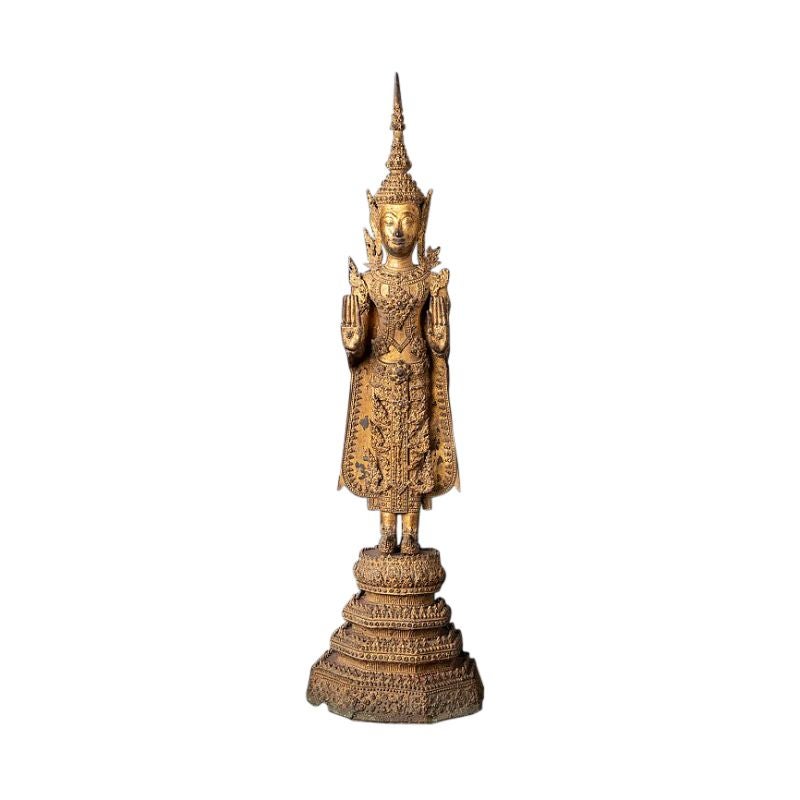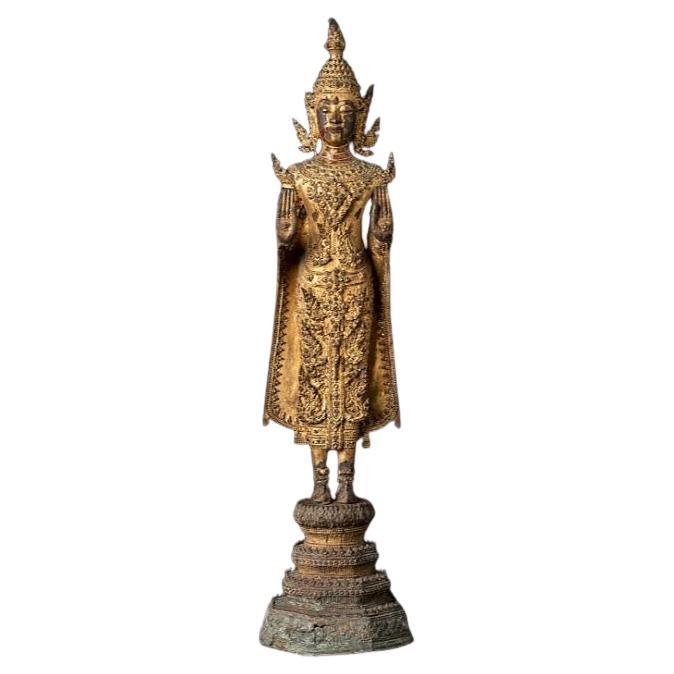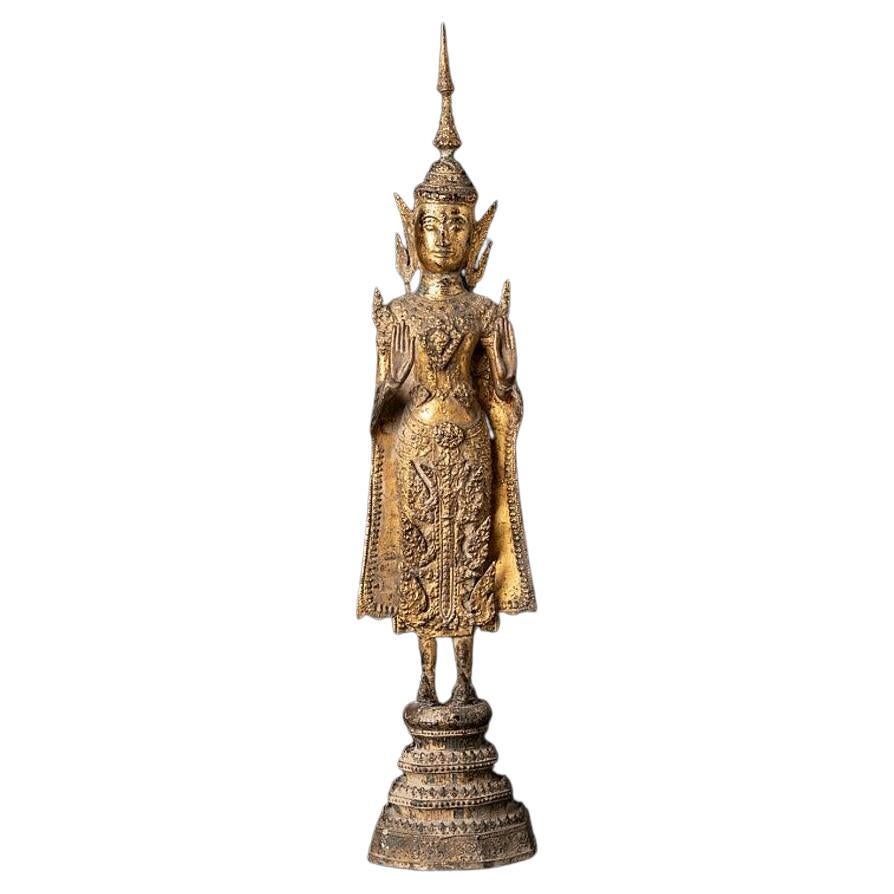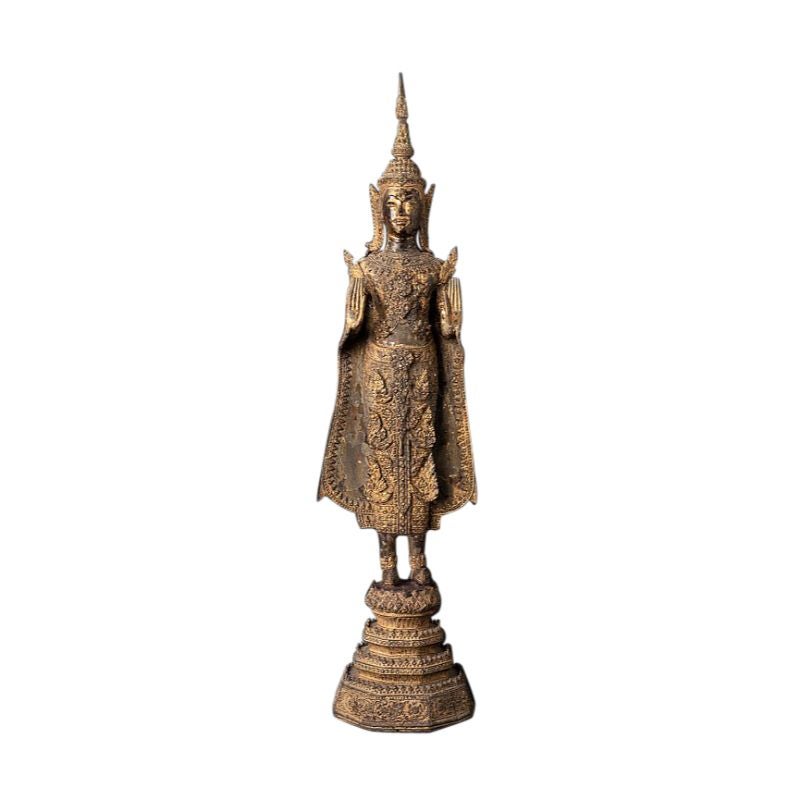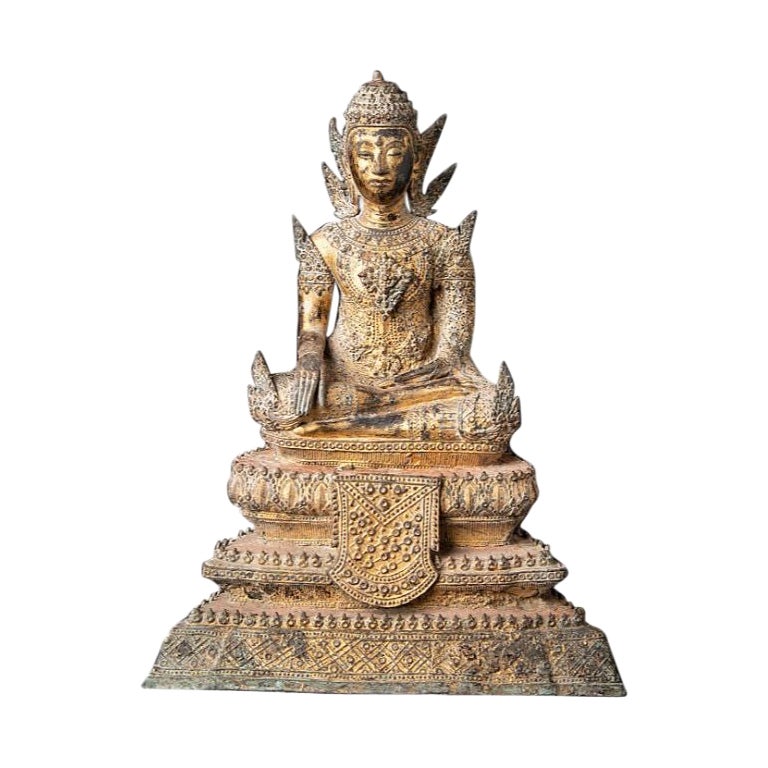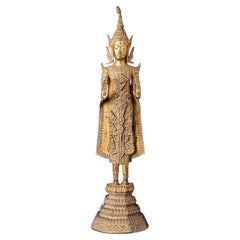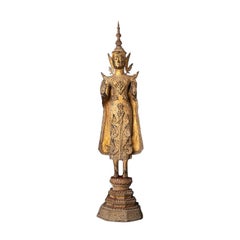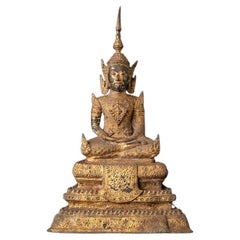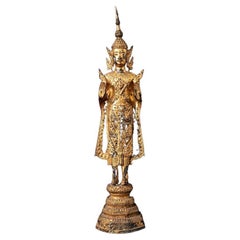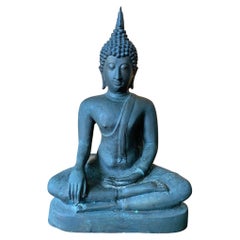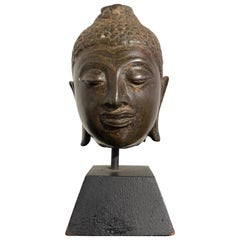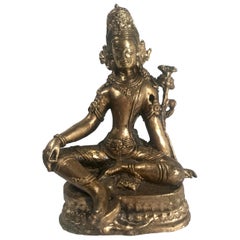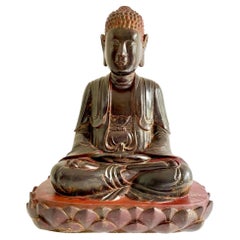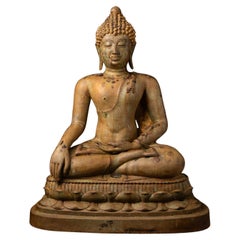
Early 19th century Antique bronze Thai Chiang Saen Buddha from Thailand
View Similar Items
Video Loading
Want more images or videos?
Request additional images or videos from the seller
1 of 22
Early 19th century Antique bronze Thai Chiang Saen Buddha from Thailand
Price:$6,668.57
About the Item
- Dimensions:Height: 25.4 in (64.5 cm)Width: 21.07 in (53.5 cm)Depth: 14.18 in (36 cm)
- Materials and Techniques:
- Place of Origin:
- Period:
- Date of Manufacture:Early 19th century
- Condition:Wear consistent with age and use.
- Seller Location:DEVENTER, NL
- Reference Number:Seller: 2970-191stDibs: LU7845239079192
About the Seller
5.0
Gold Seller
Premium sellers maintaining a 4.3+ rating and 24-hour response times
Established in 1997
1stDibs seller since 2022
59 sales on 1stDibs
Typical response time: 6 hours
Authenticity Guarantee
In the unlikely event there’s an issue with an item’s authenticity, contact us within 1 year for a full refund. DetailsMoney-Back Guarantee
If your item is not as described, is damaged in transit, or does not arrive, contact us within 7 days for a full refund. Details24-Hour Cancellation
You have a 24-hour grace period in which to reconsider your purchase, with no questions asked.Vetted Professional Sellers
Our world-class sellers must adhere to strict standards for service and quality, maintaining the integrity of our listings.Price-Match Guarantee
If you find that a seller listed the same item for a lower price elsewhere, we’ll match it.Trusted Global Delivery
Our best-in-class carrier network provides specialized shipping options worldwide, including custom delivery.More From This Seller
View AllAntique bronze Thai Rattanakosin Buddha from Thailand
Located in DEVENTER, NL
Material: wood
55,3 cm high
14,2 cm wide and 14,2 cm deep
Weight: 4.26 kgs
Abhaya mudra
Originating from Thailand
19th century - Rattanakosin period
Category
Antique 19th Century Thai Sculptures and Carvings
Materials
Bronze
Antique Bronze Thai Rattanakosin Buddha from Thailand
Located in DEVENTER, NL
Material: bronze
72,3 cm high
16,8 cm wide and 16,5 cm deep
Weight: 6.760 kgs
Gilded with 24 krt. gold
Abhaya mudra
Originating from Thailand
19th century - Rattanakosin peri...
Category
Antique 19th Century Thai Sculptures and Carvings
Materials
Bronze
Antique bronze Thai Buddha statue from Thailand
Located in DEVENTER, NL
Material: bronze
34,5 cm high
21,5 cm wide and 12,5 cm deep
Weight: 3.718 kgs
Gilded with 24 krt. gold
Dhyana mudra
Originating from Thailand
19th century - Rattanakosin period
Category
Antique 19th Century Thai Sculptures and Carvings
Materials
Bronze
Antique bronze Thai Rattanakosin Buddha from Thailand
Located in DEVENTER, NL
Material: bronze
47,3 cm high
11 cm wide and 10,5 cm deep
Weight: 2.562 kgs
Abhaya mudra
Originating from Thailand
19th century - Rattanakosin period
Category
Antique 19th Century Thai Sculptures and Carvings
Materials
Bronze
Antique Thai Bronze Rattanakosin Buddha from Thailand
Located in DEVENTER, NL
Material: bronze
68,8 cm high
16,5 cm wide and 16 cm deep
Weight: 7.161 kgs
Gilded with 24 krt. gold
Abhaya mudra
Originating from Thailand
19th century
Rattanakosin period.
Category
Antique 19th Century Thai Sculptures and Carvings
Materials
Bronze
Antique Bronze Thai Rattanakosin Buddha from Thailand
Located in DEVENTER, NL
Material: bronze
56,8 cm high
13 cm wide and 13 cm deep
Weight: 4.346 kgs
Gilded with 24 krt. gold
Abhaya mudra
Originating from Thailand
19th century - Rattanakosin period.
Category
Antique 19th Century Thai Sculptures and Carvings
Materials
Bronze
You May Also Like
Thai Chiang Saen Buddha from Bronze, c. 1950
Located in Jimbaran, Bali
This bronze Chiang Saen seated Buddha from Thailand dates to the mid-20th century. The Buddha features traditional Thai attire and detailing. As well as it...
Category
Mid-20th Century Thai Other Metalwork
Materials
Bronze
$2,560 Sale Price
20% Off
Small Thai Chiang Saen Bronze Head of the Buddha, 16th Century
Located in Austin, TX
A small and charming fragmentary cast bronze Buddha head with traces of gilding and lacquer, Lan Na Kingdom, Chiang Saen style, 16th century, Thailand.
...
Category
Antique 16th Century Thai Sculptures and Carvings
Materials
Bronze
19th Century Gold Gilded Bronze Buddha
Located in Vero Beach, FL
19th century gold gilded bronze Buddha
A finely cast bronze Buddha statue in gold gilt with modeled and incised floral motifs. This jeweled God o...
Category
Antique 19th Century Chinese Qing Sculptures and Carvings
Materials
Bronze
Large Early 19th Century Gilded Carved Wooden Vietnamese Buddha
Located in Atlanta, GA
A highly decorative early 19th century Vietnamese carved wooden and polychrome painted Buddha with traces of original gilding, creating a beautiful p...
Category
Antique Early 19th Century Vietnamese Sculptures and Carvings
Materials
Wood
Large Burmese Bronze Medicine Buddha, Pagan Style, Late 19th Century
Located in Austin, TX
A large and magnificent cast bronze image of the Medicine Buddha, Bhaisajyaguru, rendered in the Burmese Pagan style, and most likely based on a period example that was either damaged or lost, 19th century, Burma or Thailand.
He can be identified as the Medicine Buddha by the hand that rests in his lap, with his middle finger touching the thumb. A medicine pot or fruit stem would originally have been placed in his upturned palm.
The face of this Buddha has been sculpted masterfully. He has a beautiful heart shaped face topped by hair neatly arranged in the typical "snail shell curls", and surmounted by a high ushnisha. Long, pendulous earlobes frame his face, a symbol of his princely past. He gazes serenely outwards from heavily lidded, downcast eyes, a content smile upon his full, lush lips.
The Buddha is portrayed seated in vajrasana (full lotus position), his elegant hands displayed in varada mudra, the gesture of granting favors and fulfilling wishes. Long, exquisite fingers extended, the thumb and middle finger touching in a gesture of compassion.
He is clothed in a simple kasaya wrapped around his body and over one shoulder, leaving the shoulder and part of his chest bare. The diaphanous garment clings to his body, outlining his well proportioned and graceful, almost sensuous, form. The excess material pooled in neat pleats in front of him. A sash thrown over his shoulder.
He sits upon a double lotus base upon a raised platform. The platform features two kneeling attendants, usually interpreted as the monks Ananda and Kasyapa. Between them is a circular disc representing the Wheel of Dharma. Contained in the disk is a flower with eight petals, symbolizing the eightfold path, one of the principle teachings of the Buddha.
The sides and back of the platform featuring a series of singha, or lions, representative of the Buddha's royal past.
An applied lacquer patina covers the entirety of the image. Large deposits of ash (from incense) are present between the curls of the hair, as well as some the other crevices, indicating this image was the subject of worship for many years.
Bhaisajyaguru, also called the Medicine Buddha, or Buddha of Healing, is a revered figure in the Buddhist pantheon as a master able to cure suffering, both physical and spiritual, through his teachings.
The Pagan Empire ruled most of present day Burma (Myanmar) from 849 to 1297. The capital, Bagan, served as a both the center of government and religion, where Buddhism reigned supreme. Bagan was also at a crossroads of the Buddhist world, with influence from India, Nepal, Tibet, China, and even Indonesia shaping their culture. As such, Pagan Buddha...
Category
Antique Late 19th Century Burmese Sculptures and Carvings
Materials
Bronze
Large Bronze Buddha Head with Stand Thailand
Located in Atlanta, GA
A impressive bronze Buddha head fragment displayed on wood stand circa late 19th century. The Buddha was cast in the early "U Thong" style that flourished between the 12-13rd century A.D in Central Thailand. The Buddha iconography of that period is exemplified by the influence from Mon and Khmer kingdom, featuring a more square face and a characteristic small band between the hairline and the forehead.
This large Buddha head...
Category
Antique 19th Century Thai Other Sculptures and Carvings
Materials
Bronze
$5,000 Sale Price
33% Off
Recently Viewed
View AllMore Ways To Browse
Chiang Saen Buddha
Chinese Hexagon
Indonesian Panel
Hindu Bronze
Asian Woman Sculpture
Carved Monk
Bronze Buddha Hands
Asian Carved Wood Statue
Carved Teak Asian Furniture
Lions Wood Carvings
Antique Furniture Nepal
Japanese Meiji Carving
Small Buddha
Buddhist Flowers
Temple Guardian
19th Century Bronze Buddha
Tibetan Bronze
Antique Talisman
